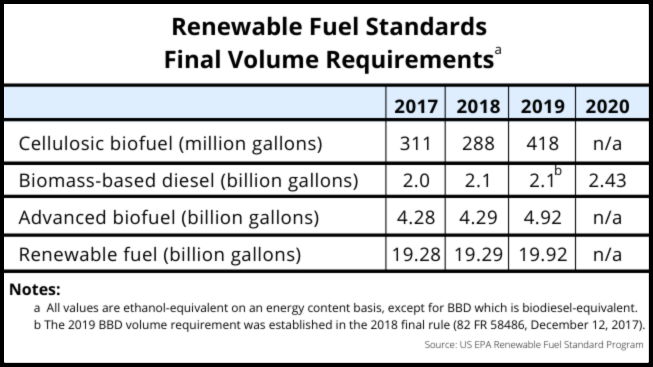U.S. EPA to Revise Renewable Fuel Standard Program
In an effort to reduce dependence on fuel imports by increasing domestic sources, the U.S. Environmental Protection Agency is proposing to change its Renewable Fuel Standard Program. Changes to the regulation of fuels and fuel additives include:

(1) increasing the volume of cellulosic biofuel, biomass-based diesel, advanced biofuel, and total renewable fuel that must be used in transportation fuel each year;
(2) new definitions and criteria for both renewable fuels and the feedstocks used to produce them; and
(3) new greenhouse gas emission thresholds for renewable fuels.
The EPA’s revised program will also assess the full life cycle emission impacts of renewable fuel production including both direct and indirect emissions and significant emissions from land use changes.
Revisions to the Renewable Fuel Standard program will describe standards applicable to (a) refiners, blenders, and importers of gasoline and diesel, and (b) the renewable fuels that would qualify for compliance. Proposed changes will be implemented starting January 1, 2010.
Renewable Fuel Volume Requirements
The EPA’s proposed changes will ensure that the four volume requirements of the Energy Independence and Security Act of 2007 (EISA) would be met. EISA specifies four separate categories of renewable fuels, each with a separate volume mandate.

Change in Renewable Fuel Definition
“Renewable Fuel” is defined as fuel produced from renewable biomass and that is used to replace or reduce the quantity of fossil fuel present in a transportation fuel, which is fuel used in motor vehicles, motor vehicle engines, non-road vehicles or non-road engines except for ocean-going vessels.
The proposed revisions of the EPA further clarifies the definition of renewable fuels based on the new statutory definitions in EISA. The new definitions identify the feedstocks used in renewable fuel production.
The EPA’s proposed revised Renewable Fuel Standard has three subcategories of renewable fuels:
Advanced Biofuel – a renewable fuel other than ethanol derived from corn starch and which must achieve a life cycle GHG emission displacement of 50% compared to the gasoline or diesel fuel it displaces.
Cellulosic Biofuel – any renewable fuel, not necessarily ethanol, derived from any cellulose, hemicellulose, or lignin, each of which must originate from renewable biomass. It must achieve a life cycle GHG emission displacement of 60% compared to the gasoline or diesel fuel it displaces for it to qualify as cellulosic biofuel.
Biomass-based Diesel – includes biodiesel (monoalkyl esters), non-ester renewable diesel, and any other diesel fuel made from renewable biomass, as long as they are not “co-processed” with petroleum. Co-processed, according to the EPA, means that renewable biomass was simultaneously processed with petroleum feedstock in the same unit or units to produce a fuel that is partially renewable. EISA requires that such fuel achieve a life cycle GHG emission displacement of 50% compared to the gasoline or diesel fuel it displaces.
EISA says that “renewable biomass” means planted crops and crop residue, planted trees and tree residues, animal waste material and byproducts, slash and pre-commercial thinnings from non-federal forest lands, biomass cleared from the vicinity of buildings and other areas to reduce the risk of wildfire, algae, and separated yard waste or food waste. The EPA incorporates EISA’s description of renewable biomass to its proposed definition and clarifies factors relating to land restrictions established by EISA.
The EPA is soliciting comments to its proposed changes and will be holding a public hearing on June 9, 2009, in Washington D.C.
This entry was posted on Monday, May 18th, 2009 and is filed under Biobased Regulations, Biogenic Carbon Testing of Biofuels .